Disease Mongering and Medicalization: Impact on Society and Actions Taken
VerifiedAdded on 2023/06/09
|9
|2519
|196
AI Summary
This article discusses disease mongering and medicalization, their impact on society, and the actions taken to address the issue. It covers the definition of disease mongering, medicalization, and their impact on society. The article also discusses the actions taken by the government and other bodies, as well as examples of disease mongering and medicalization.
Contribute Materials
Your contribution can guide someone’s learning journey. Share your
documents today.
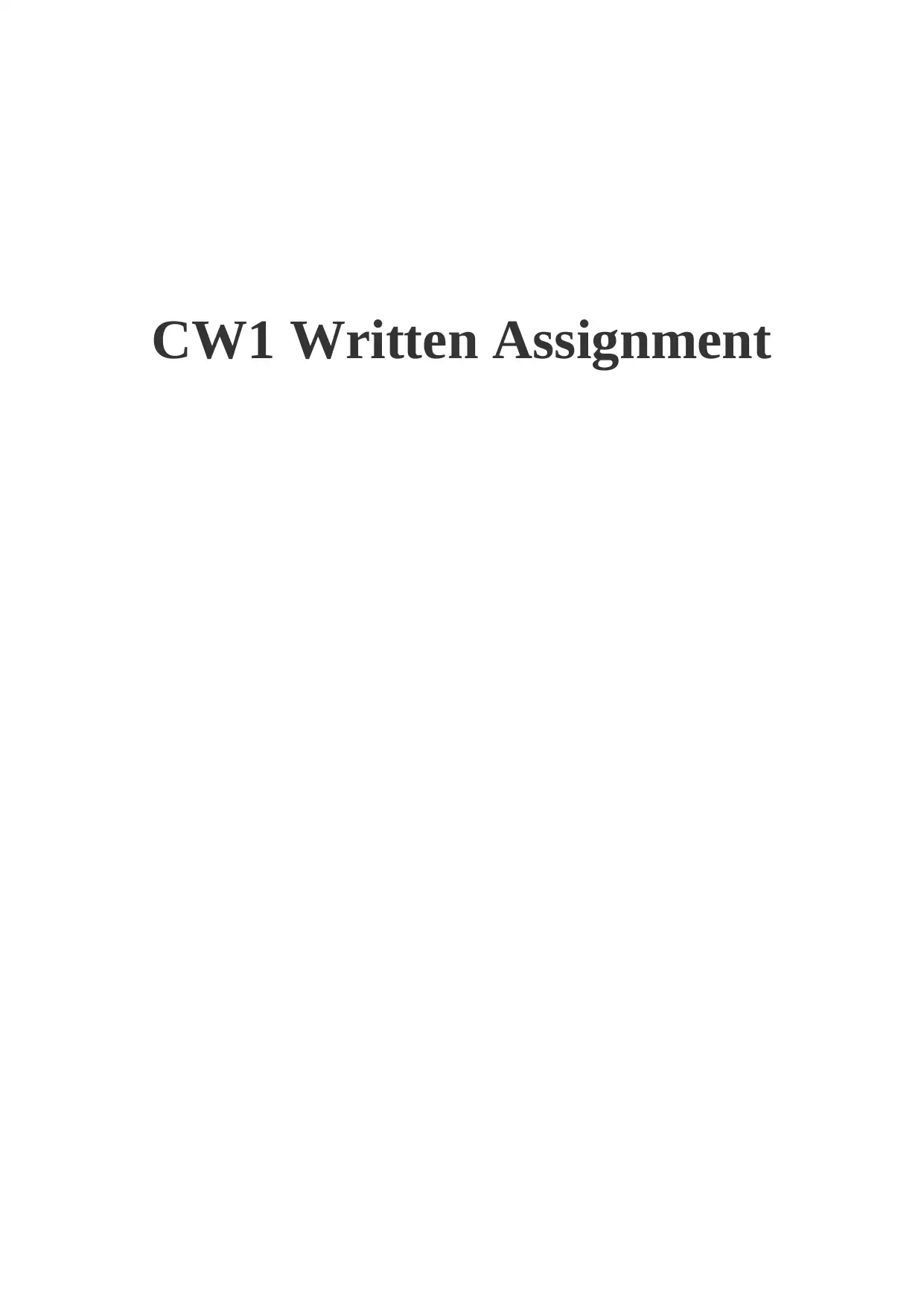
CW1 Written Assignment
Secure Best Marks with AI Grader
Need help grading? Try our AI Grader for instant feedback on your assignments.
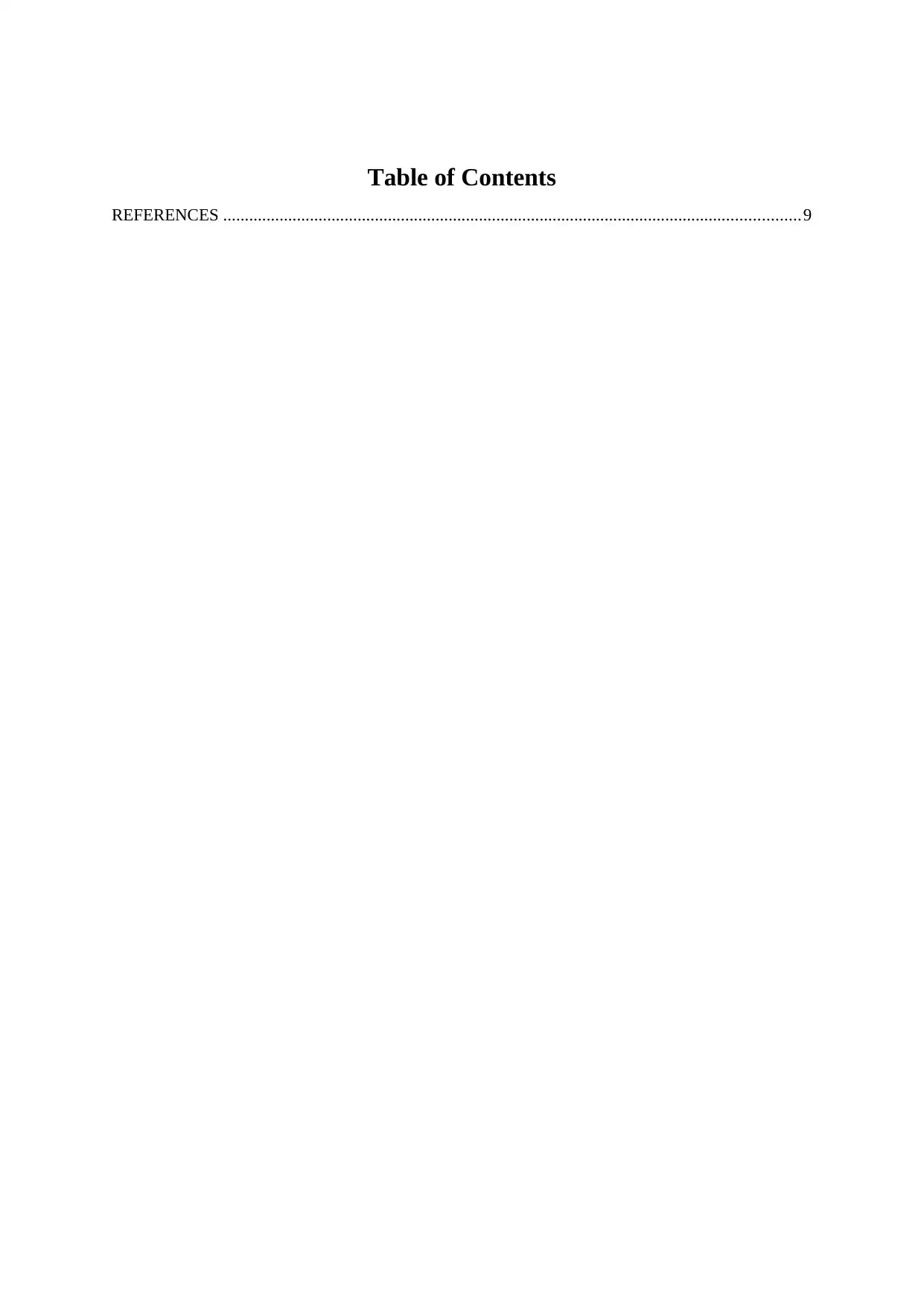
Table of Contents
REFERENCES .....................................................................................................................................9
REFERENCES .....................................................................................................................................9
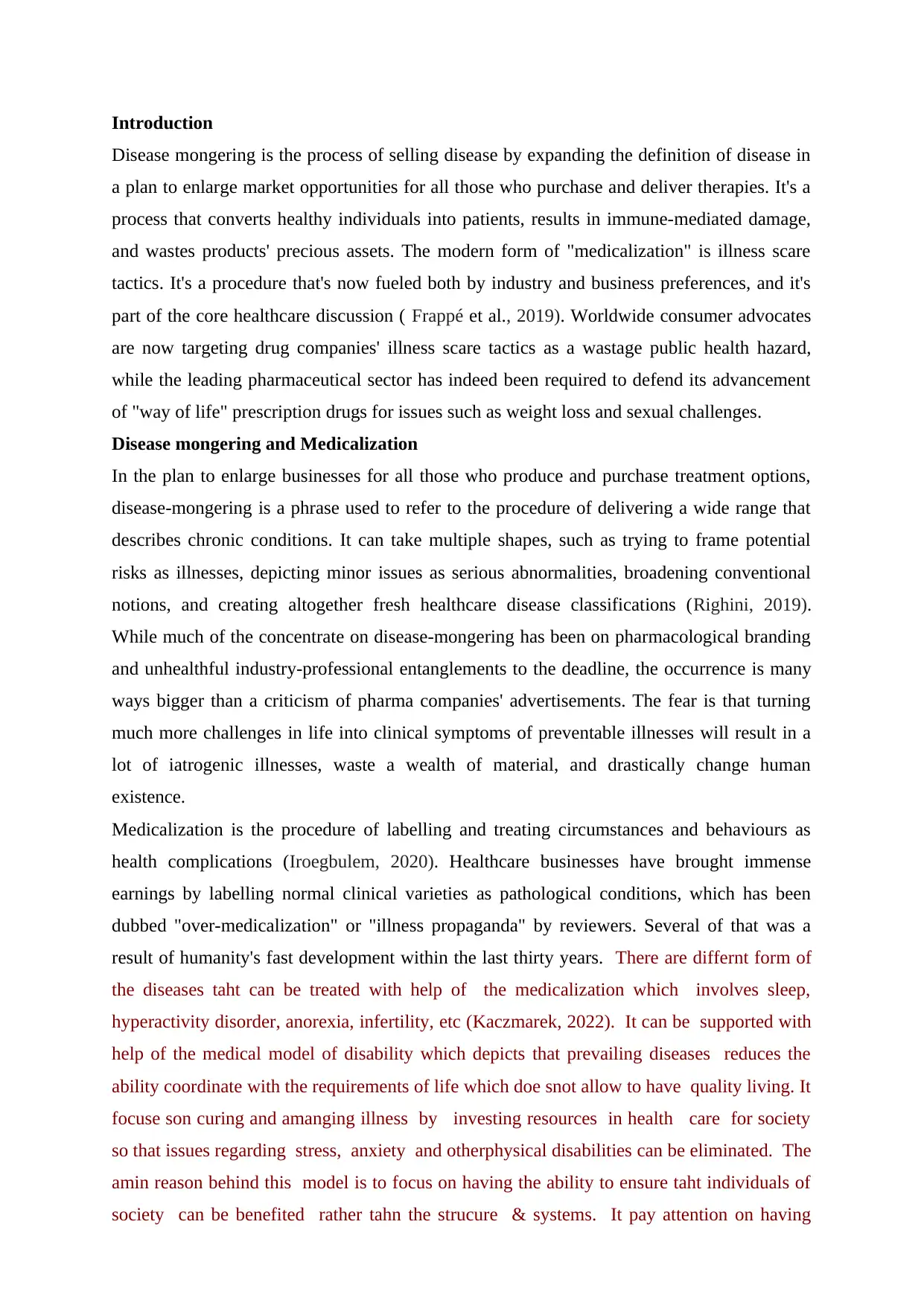
Introduction
Disease mongering is the process of selling disease by expanding the definition of disease in
a plan to enlarge market opportunities for all those who purchase and deliver therapies. It's a
process that converts healthy individuals into patients, results in immune-mediated damage,
and wastes products' precious assets. The modern form of "medicalization" is illness scare
tactics. It's a procedure that's now fueled both by industry and business preferences, and it's
part of the core healthcare discussion ( Frappé et al., 2019). Worldwide consumer advocates
are now targeting drug companies' illness scare tactics as a wastage public health hazard,
while the leading pharmaceutical sector has indeed been required to defend its advancement
of "way of life" prescription drugs for issues such as weight loss and sexual challenges.
Disease mongering and Medicalization
In the plan to enlarge businesses for all those who produce and purchase treatment options,
disease-mongering is a phrase used to refer to the procedure of delivering a wide range that
describes chronic conditions. It can take multiple shapes, such as trying to frame potential
risks as illnesses, depicting minor issues as serious abnormalities, broadening conventional
notions, and creating altogether fresh healthcare disease classifications (Righini, 2019).
While much of the concentrate on disease-mongering has been on pharmacological branding
and unhealthful industry-professional entanglements to the deadline, the occurrence is many
ways bigger than a criticism of pharma companies' advertisements. The fear is that turning
much more challenges in life into clinical symptoms of preventable illnesses will result in a
lot of iatrogenic illnesses, waste a wealth of material, and drastically change human
existence.
Medicalization is the procedure of labelling and treating circumstances and behaviours as
health complications (Iroegbulem, 2020). Healthcare businesses have brought immense
earnings by labelling normal clinical varieties as pathological conditions, which has been
dubbed "over-medicalization" or "illness propaganda" by reviewers. Several of that was a
result of humanity's fast development within the last thirty years. There are differnt form of
the diseases taht can be treated with help of the medicalization which involves sleep,
hyperactivity disorder, anorexia, infertility, etc (Kaczmarek, 2022). It can be supported with
help of the medical model of disability which depicts that prevailing diseases reduces the
ability coordinate with the requirements of life which doe snot allow to have quality living. It
focuse son curing and amanging illness by investing resources in health care for society
so that issues regarding stress, anxiety and otherphysical disabilities can be eliminated. The
amin reason behind this model is to focus on having the ability to ensure taht individuals of
society can be benefited rather tahn the strucure & systems. It pay attention on having
Disease mongering is the process of selling disease by expanding the definition of disease in
a plan to enlarge market opportunities for all those who purchase and deliver therapies. It's a
process that converts healthy individuals into patients, results in immune-mediated damage,
and wastes products' precious assets. The modern form of "medicalization" is illness scare
tactics. It's a procedure that's now fueled both by industry and business preferences, and it's
part of the core healthcare discussion ( Frappé et al., 2019). Worldwide consumer advocates
are now targeting drug companies' illness scare tactics as a wastage public health hazard,
while the leading pharmaceutical sector has indeed been required to defend its advancement
of "way of life" prescription drugs for issues such as weight loss and sexual challenges.
Disease mongering and Medicalization
In the plan to enlarge businesses for all those who produce and purchase treatment options,
disease-mongering is a phrase used to refer to the procedure of delivering a wide range that
describes chronic conditions. It can take multiple shapes, such as trying to frame potential
risks as illnesses, depicting minor issues as serious abnormalities, broadening conventional
notions, and creating altogether fresh healthcare disease classifications (Righini, 2019).
While much of the concentrate on disease-mongering has been on pharmacological branding
and unhealthful industry-professional entanglements to the deadline, the occurrence is many
ways bigger than a criticism of pharma companies' advertisements. The fear is that turning
much more challenges in life into clinical symptoms of preventable illnesses will result in a
lot of iatrogenic illnesses, waste a wealth of material, and drastically change human
existence.
Medicalization is the procedure of labelling and treating circumstances and behaviours as
health complications (Iroegbulem, 2020). Healthcare businesses have brought immense
earnings by labelling normal clinical varieties as pathological conditions, which has been
dubbed "over-medicalization" or "illness propaganda" by reviewers. Several of that was a
result of humanity's fast development within the last thirty years. There are differnt form of
the diseases taht can be treated with help of the medicalization which involves sleep,
hyperactivity disorder, anorexia, infertility, etc (Kaczmarek, 2022). It can be supported with
help of the medical model of disability which depicts that prevailing diseases reduces the
ability coordinate with the requirements of life which doe snot allow to have quality living. It
focuse son curing and amanging illness by investing resources in health care for society
so that issues regarding stress, anxiety and otherphysical disabilities can be eliminated. The
amin reason behind this model is to focus on having the ability to ensure taht individuals of
society can be benefited rather tahn the strucure & systems. It pay attention on having
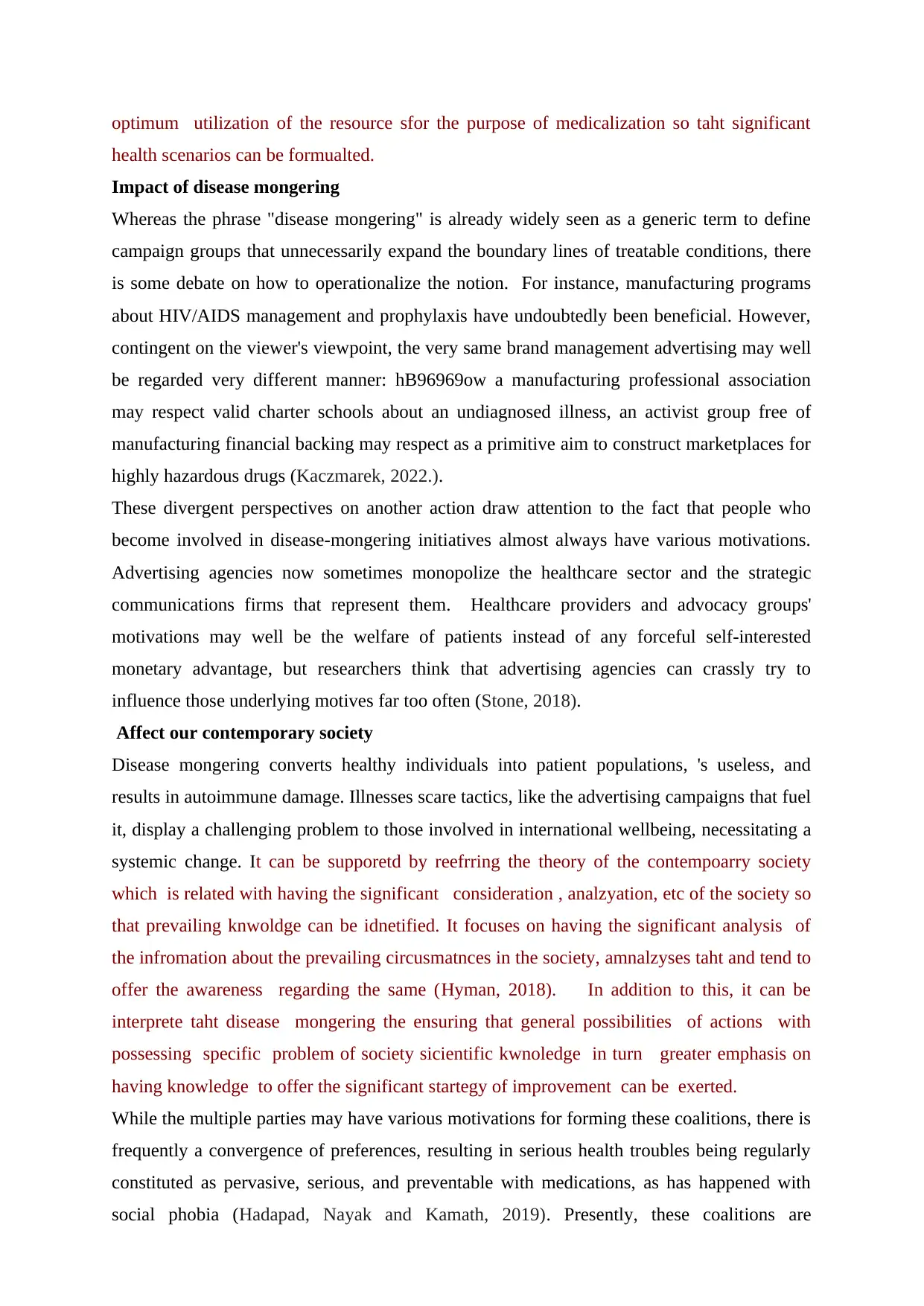
optimum utilization of the resource sfor the purpose of medicalization so taht significant
health scenarios can be formualted.
Impact of disease mongering
Whereas the phrase "disease mongering" is already widely seen as a generic term to define
campaign groups that unnecessarily expand the boundary lines of treatable conditions, there
is some debate on how to operationalize the notion. For instance, manufacturing programs
about HIV/AIDS management and prophylaxis have undoubtedly been beneficial. However,
contingent on the viewer's viewpoint, the very same brand management advertising may well
be regarded very different manner: hB96969ow a manufacturing professional association
may respect valid charter schools about an undiagnosed illness, an activist group free of
manufacturing financial backing may respect as a primitive aim to construct marketplaces for
highly hazardous drugs (Kaczmarek, 2022.).
These divergent perspectives on another action draw attention to the fact that people who
become involved in disease-mongering initiatives almost always have various motivations.
Advertising agencies now sometimes monopolize the healthcare sector and the strategic
communications firms that represent them. Healthcare providers and advocacy groups'
motivations may well be the welfare of patients instead of any forceful self-interested
monetary advantage, but researchers think that advertising agencies can crassly try to
influence those underlying motives far too often (Stone, 2018).
Affect our contemporary society
Disease mongering converts healthy individuals into patient populations, 's useless, and
results in autoimmune damage. Illnesses scare tactics, like the advertising campaigns that fuel
it, display a challenging problem to those involved in international wellbeing, necessitating a
systemic change. It can be supporetd by reefrring the theory of the contempoarry society
which is related with having the significant consideration , analzyation, etc of the society so
that prevailing knwoldge can be idnetified. It focuses on having the significant analysis of
the infromation about the prevailing circusmatnces in the society, amnalzyses taht and tend to
offer the awareness regarding the same (Hyman, 2018). In addition to this, it can be
interprete taht disease mongering the ensuring that general possibilities of actions with
possessing specific problem of society sicientific kwnoledge in turn greater emphasis on
having knowledge to offer the significant startegy of improvement can be exerted.
While the multiple parties may have various motivations for forming these coalitions, there is
frequently a convergence of preferences, resulting in serious health troubles being regularly
constituted as pervasive, serious, and preventable with medications, as has happened with
social phobia (Hadapad, Nayak and Kamath, 2019). Presently, these coalitions are
health scenarios can be formualted.
Impact of disease mongering
Whereas the phrase "disease mongering" is already widely seen as a generic term to define
campaign groups that unnecessarily expand the boundary lines of treatable conditions, there
is some debate on how to operationalize the notion. For instance, manufacturing programs
about HIV/AIDS management and prophylaxis have undoubtedly been beneficial. However,
contingent on the viewer's viewpoint, the very same brand management advertising may well
be regarded very different manner: hB96969ow a manufacturing professional association
may respect valid charter schools about an undiagnosed illness, an activist group free of
manufacturing financial backing may respect as a primitive aim to construct marketplaces for
highly hazardous drugs (Kaczmarek, 2022.).
These divergent perspectives on another action draw attention to the fact that people who
become involved in disease-mongering initiatives almost always have various motivations.
Advertising agencies now sometimes monopolize the healthcare sector and the strategic
communications firms that represent them. Healthcare providers and advocacy groups'
motivations may well be the welfare of patients instead of any forceful self-interested
monetary advantage, but researchers think that advertising agencies can crassly try to
influence those underlying motives far too often (Stone, 2018).
Affect our contemporary society
Disease mongering converts healthy individuals into patient populations, 's useless, and
results in autoimmune damage. Illnesses scare tactics, like the advertising campaigns that fuel
it, display a challenging problem to those involved in international wellbeing, necessitating a
systemic change. It can be supporetd by reefrring the theory of the contempoarry society
which is related with having the significant consideration , analzyation, etc of the society so
that prevailing knwoldge can be idnetified. It focuses on having the significant analysis of
the infromation about the prevailing circusmatnces in the society, amnalzyses taht and tend to
offer the awareness regarding the same (Hyman, 2018). In addition to this, it can be
interprete taht disease mongering the ensuring that general possibilities of actions with
possessing specific problem of society sicientific kwnoledge in turn greater emphasis on
having knowledge to offer the significant startegy of improvement can be exerted.
While the multiple parties may have various motivations for forming these coalitions, there is
frequently a convergence of preferences, resulting in serious health troubles being regularly
constituted as pervasive, serious, and preventable with medications, as has happened with
social phobia (Hadapad, Nayak and Kamath, 2019). Presently, these coalitions are
Secure Best Marks with AI Grader
Need help grading? Try our AI Grader for instant feedback on your assignments.
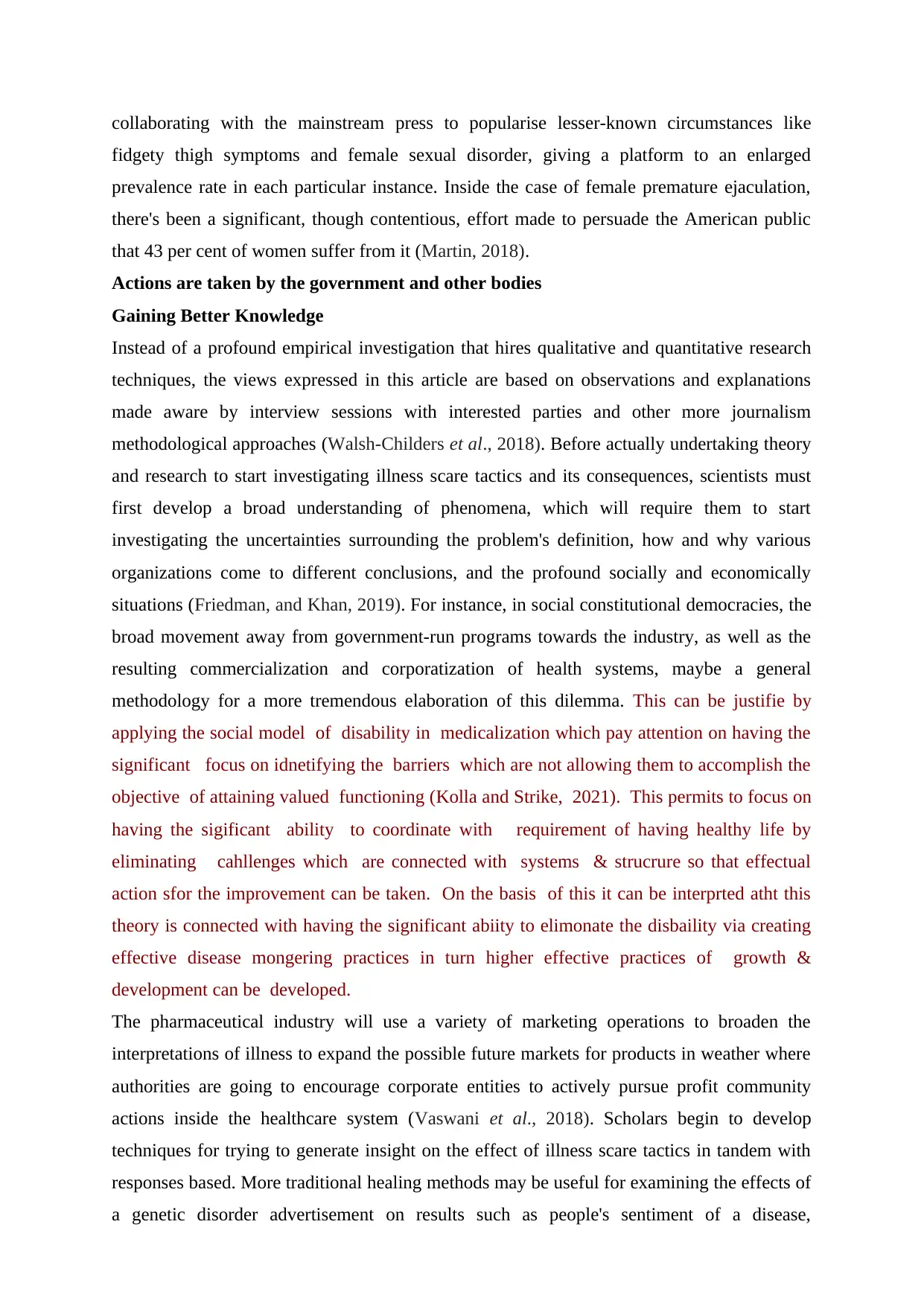
collaborating with the mainstream press to popularise lesser-known circumstances like
fidgety thigh symptoms and female sexual disorder, giving a platform to an enlarged
prevalence rate in each particular instance. Inside the case of female premature ejaculation,
there's been a significant, though contentious, effort made to persuade the American public
that 43 per cent of women suffer from it (Martin, 2018).
Actions are taken by the government and other bodies
Gaining Better Knowledge
Instead of a profound empirical investigation that hires qualitative and quantitative research
techniques, the views expressed in this article are based on observations and explanations
made aware by interview sessions with interested parties and other more journalism
methodological approaches (Walsh-Childers et al., 2018). Before actually undertaking theory
and research to start investigating illness scare tactics and its consequences, scientists must
first develop a broad understanding of phenomena, which will require them to start
investigating the uncertainties surrounding the problem's definition, how and why various
organizations come to different conclusions, and the profound socially and economically
situations (Friedman, and Khan, 2019). For instance, in social constitutional democracies, the
broad movement away from government-run programs towards the industry, as well as the
resulting commercialization and corporatization of health systems, maybe a general
methodology for a more tremendous elaboration of this dilemma. This can be justifie by
applying the social model of disability in medicalization which pay attention on having the
significant focus on idnetifying the barriers which are not allowing them to accomplish the
objective of attaining valued functioning (Kolla and Strike, 2021). This permits to focus on
having the sigificant ability to coordinate with requirement of having healthy life by
eliminating cahllenges which are connected with systems & strucrure so that effectual
action sfor the improvement can be taken. On the basis of this it can be interprted atht this
theory is connected with having the significant abiity to elimonate the disbaility via creating
effective disease mongering practices in turn higher effective practices of growth &
development can be developed.
The pharmaceutical industry will use a variety of marketing operations to broaden the
interpretations of illness to expand the possible future markets for products in weather where
authorities are going to encourage corporate entities to actively pursue profit community
actions inside the healthcare system (Vaswani et al., 2018). Scholars begin to develop
techniques for trying to generate insight on the effect of illness scare tactics in tandem with
responses based. More traditional healing methods may be useful for examining the effects of
a genetic disorder advertisement on results such as people's sentiment of a disease,
fidgety thigh symptoms and female sexual disorder, giving a platform to an enlarged
prevalence rate in each particular instance. Inside the case of female premature ejaculation,
there's been a significant, though contentious, effort made to persuade the American public
that 43 per cent of women suffer from it (Martin, 2018).
Actions are taken by the government and other bodies
Gaining Better Knowledge
Instead of a profound empirical investigation that hires qualitative and quantitative research
techniques, the views expressed in this article are based on observations and explanations
made aware by interview sessions with interested parties and other more journalism
methodological approaches (Walsh-Childers et al., 2018). Before actually undertaking theory
and research to start investigating illness scare tactics and its consequences, scientists must
first develop a broad understanding of phenomena, which will require them to start
investigating the uncertainties surrounding the problem's definition, how and why various
organizations come to different conclusions, and the profound socially and economically
situations (Friedman, and Khan, 2019). For instance, in social constitutional democracies, the
broad movement away from government-run programs towards the industry, as well as the
resulting commercialization and corporatization of health systems, maybe a general
methodology for a more tremendous elaboration of this dilemma. This can be justifie by
applying the social model of disability in medicalization which pay attention on having the
significant focus on idnetifying the barriers which are not allowing them to accomplish the
objective of attaining valued functioning (Kolla and Strike, 2021). This permits to focus on
having the sigificant ability to coordinate with requirement of having healthy life by
eliminating cahllenges which are connected with systems & strucrure so that effectual
action sfor the improvement can be taken. On the basis of this it can be interprted atht this
theory is connected with having the significant abiity to elimonate the disbaility via creating
effective disease mongering practices in turn higher effective practices of growth &
development can be developed.
The pharmaceutical industry will use a variety of marketing operations to broaden the
interpretations of illness to expand the possible future markets for products in weather where
authorities are going to encourage corporate entities to actively pursue profit community
actions inside the healthcare system (Vaswani et al., 2018). Scholars begin to develop
techniques for trying to generate insight on the effect of illness scare tactics in tandem with
responses based. More traditional healing methods may be useful for examining the effects of
a genetic disorder advertisement on results such as people's sentiment of a disease,
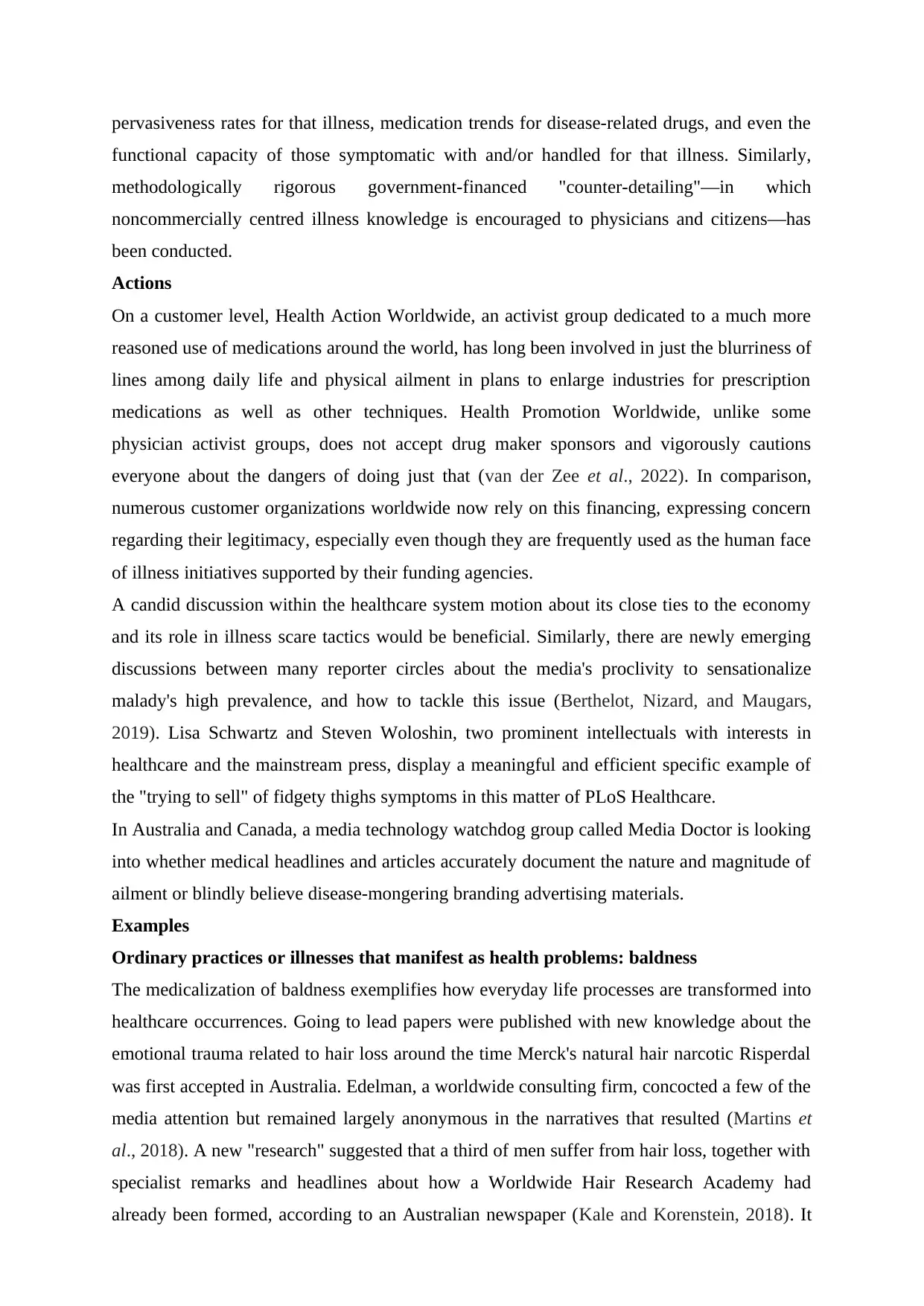
pervasiveness rates for that illness, medication trends for disease-related drugs, and even the
functional capacity of those symptomatic with and/or handled for that illness. Similarly,
methodologically rigorous government-financed "counter-detailing"—in which
noncommercially centred illness knowledge is encouraged to physicians and citizens—has
been conducted.
Actions
On a customer level, Health Action Worldwide, an activist group dedicated to a much more
reasoned use of medications around the world, has long been involved in just the blurriness of
lines among daily life and physical ailment in plans to enlarge industries for prescription
medications as well as other techniques. Health Promotion Worldwide, unlike some
physician activist groups, does not accept drug maker sponsors and vigorously cautions
everyone about the dangers of doing just that (van der Zee et al., 2022). In comparison,
numerous customer organizations worldwide now rely on this financing, expressing concern
regarding their legitimacy, especially even though they are frequently used as the human face
of illness initiatives supported by their funding agencies.
A candid discussion within the healthcare system motion about its close ties to the economy
and its role in illness scare tactics would be beneficial. Similarly, there are newly emerging
discussions between many reporter circles about the media's proclivity to sensationalize
malady's high prevalence, and how to tackle this issue (Berthelot, Nizard, and Maugars,
2019). Lisa Schwartz and Steven Woloshin, two prominent intellectuals with interests in
healthcare and the mainstream press, display a meaningful and efficient specific example of
the "trying to sell" of fidgety thighs symptoms in this matter of PLoS Healthcare.
In Australia and Canada, a media technology watchdog group called Media Doctor is looking
into whether medical headlines and articles accurately document the nature and magnitude of
ailment or blindly believe disease-mongering branding advertising materials.
Examples
Ordinary practices or illnesses that manifest as health problems: baldness
The medicalization of baldness exemplifies how everyday life processes are transformed into
healthcare occurrences. Going to lead papers were published with new knowledge about the
emotional trauma related to hair loss around the time Merck's natural hair narcotic Risperdal
was first accepted in Australia. Edelman, a worldwide consulting firm, concocted a few of the
media attention but remained largely anonymous in the narratives that resulted (Martins et
al., 2018). A new "research" suggested that a third of men suffer from hair loss, together with
specialist remarks and headlines about how a Worldwide Hair Research Academy had
already been formed, according to an Australian newspaper (Kale and Korenstein, 2018). It
functional capacity of those symptomatic with and/or handled for that illness. Similarly,
methodologically rigorous government-financed "counter-detailing"—in which
noncommercially centred illness knowledge is encouraged to physicians and citizens—has
been conducted.
Actions
On a customer level, Health Action Worldwide, an activist group dedicated to a much more
reasoned use of medications around the world, has long been involved in just the blurriness of
lines among daily life and physical ailment in plans to enlarge industries for prescription
medications as well as other techniques. Health Promotion Worldwide, unlike some
physician activist groups, does not accept drug maker sponsors and vigorously cautions
everyone about the dangers of doing just that (van der Zee et al., 2022). In comparison,
numerous customer organizations worldwide now rely on this financing, expressing concern
regarding their legitimacy, especially even though they are frequently used as the human face
of illness initiatives supported by their funding agencies.
A candid discussion within the healthcare system motion about its close ties to the economy
and its role in illness scare tactics would be beneficial. Similarly, there are newly emerging
discussions between many reporter circles about the media's proclivity to sensationalize
malady's high prevalence, and how to tackle this issue (Berthelot, Nizard, and Maugars,
2019). Lisa Schwartz and Steven Woloshin, two prominent intellectuals with interests in
healthcare and the mainstream press, display a meaningful and efficient specific example of
the "trying to sell" of fidgety thighs symptoms in this matter of PLoS Healthcare.
In Australia and Canada, a media technology watchdog group called Media Doctor is looking
into whether medical headlines and articles accurately document the nature and magnitude of
ailment or blindly believe disease-mongering branding advertising materials.
Examples
Ordinary practices or illnesses that manifest as health problems: baldness
The medicalization of baldness exemplifies how everyday life processes are transformed into
healthcare occurrences. Going to lead papers were published with new knowledge about the
emotional trauma related to hair loss around the time Merck's natural hair narcotic Risperdal
was first accepted in Australia. Edelman, a worldwide consulting firm, concocted a few of the
media attention but remained largely anonymous in the narratives that resulted (Martins et
al., 2018). A new "research" suggested that a third of men suffer from hair loss, together with
specialist remarks and headlines about how a Worldwide Hair Research Academy had
already been formed, according to an Australian newspaper (Kale and Korenstein, 2018). It
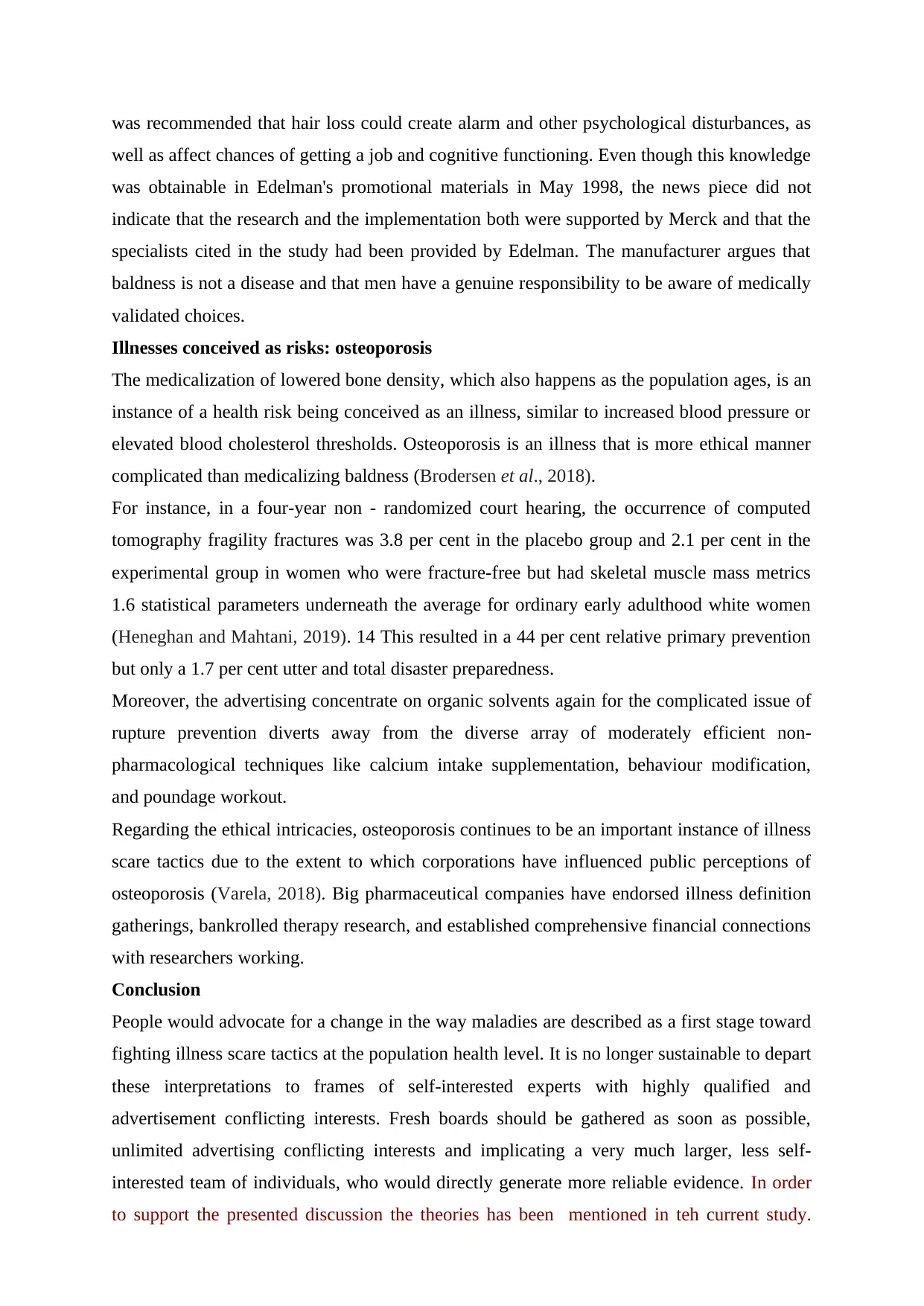
was recommended that hair loss could create alarm and other psychological disturbances, as
well as affect chances of getting a job and cognitive functioning. Even though this knowledge
was obtainable in Edelman's promotional materials in May 1998, the news piece did not
indicate that the research and the implementation both were supported by Merck and that the
specialists cited in the study had been provided by Edelman. The manufacturer argues that
baldness is not a disease and that men have a genuine responsibility to be aware of medically
validated choices.
Illnesses conceived as risks: osteoporosis
The medicalization of lowered bone density, which also happens as the population ages, is an
instance of a health risk being conceived as an illness, similar to increased blood pressure or
elevated blood cholesterol thresholds. Osteoporosis is an illness that is more ethical manner
complicated than medicalizing baldness (Brodersen et al., 2018).
For instance, in a four-year non - randomized court hearing, the occurrence of computed
tomography fragility fractures was 3.8 per cent in the placebo group and 2.1 per cent in the
experimental group in women who were fracture-free but had skeletal muscle mass metrics
1.6 statistical parameters underneath the average for ordinary early adulthood white women
(Heneghan and Mahtani, 2019). 14 This resulted in a 44 per cent relative primary prevention
but only a 1.7 per cent utter and total disaster preparedness.
Moreover, the advertising concentrate on organic solvents again for the complicated issue of
rupture prevention diverts away from the diverse array of moderately efficient non-
pharmacological techniques like calcium intake supplementation, behaviour modification,
and poundage workout.
Regarding the ethical intricacies, osteoporosis continues to be an important instance of illness
scare tactics due to the extent to which corporations have influenced public perceptions of
osteoporosis (Varela, 2018). Big pharmaceutical companies have endorsed illness definition
gatherings, bankrolled therapy research, and established comprehensive financial connections
with researchers working.
Conclusion
People would advocate for a change in the way maladies are described as a first stage toward
fighting illness scare tactics at the population health level. It is no longer sustainable to depart
these interpretations to frames of self-interested experts with highly qualified and
advertisement conflicting interests. Fresh boards should be gathered as soon as possible,
unlimited advertising conflicting interests and implicating a very much larger, less self-
interested team of individuals, who would directly generate more reliable evidence. In order
to support the presented discussion the theories has been mentioned in teh current study.
well as affect chances of getting a job and cognitive functioning. Even though this knowledge
was obtainable in Edelman's promotional materials in May 1998, the news piece did not
indicate that the research and the implementation both were supported by Merck and that the
specialists cited in the study had been provided by Edelman. The manufacturer argues that
baldness is not a disease and that men have a genuine responsibility to be aware of medically
validated choices.
Illnesses conceived as risks: osteoporosis
The medicalization of lowered bone density, which also happens as the population ages, is an
instance of a health risk being conceived as an illness, similar to increased blood pressure or
elevated blood cholesterol thresholds. Osteoporosis is an illness that is more ethical manner
complicated than medicalizing baldness (Brodersen et al., 2018).
For instance, in a four-year non - randomized court hearing, the occurrence of computed
tomography fragility fractures was 3.8 per cent in the placebo group and 2.1 per cent in the
experimental group in women who were fracture-free but had skeletal muscle mass metrics
1.6 statistical parameters underneath the average for ordinary early adulthood white women
(Heneghan and Mahtani, 2019). 14 This resulted in a 44 per cent relative primary prevention
but only a 1.7 per cent utter and total disaster preparedness.
Moreover, the advertising concentrate on organic solvents again for the complicated issue of
rupture prevention diverts away from the diverse array of moderately efficient non-
pharmacological techniques like calcium intake supplementation, behaviour modification,
and poundage workout.
Regarding the ethical intricacies, osteoporosis continues to be an important instance of illness
scare tactics due to the extent to which corporations have influenced public perceptions of
osteoporosis (Varela, 2018). Big pharmaceutical companies have endorsed illness definition
gatherings, bankrolled therapy research, and established comprehensive financial connections
with researchers working.
Conclusion
People would advocate for a change in the way maladies are described as a first stage toward
fighting illness scare tactics at the population health level. It is no longer sustainable to depart
these interpretations to frames of self-interested experts with highly qualified and
advertisement conflicting interests. Fresh boards should be gathered as soon as possible,
unlimited advertising conflicting interests and implicating a very much larger, less self-
interested team of individuals, who would directly generate more reliable evidence. In order
to support the presented discussion the theories has been mentioned in teh current study.
Paraphrase This Document
Need a fresh take? Get an instant paraphrase of this document with our AI Paraphraser
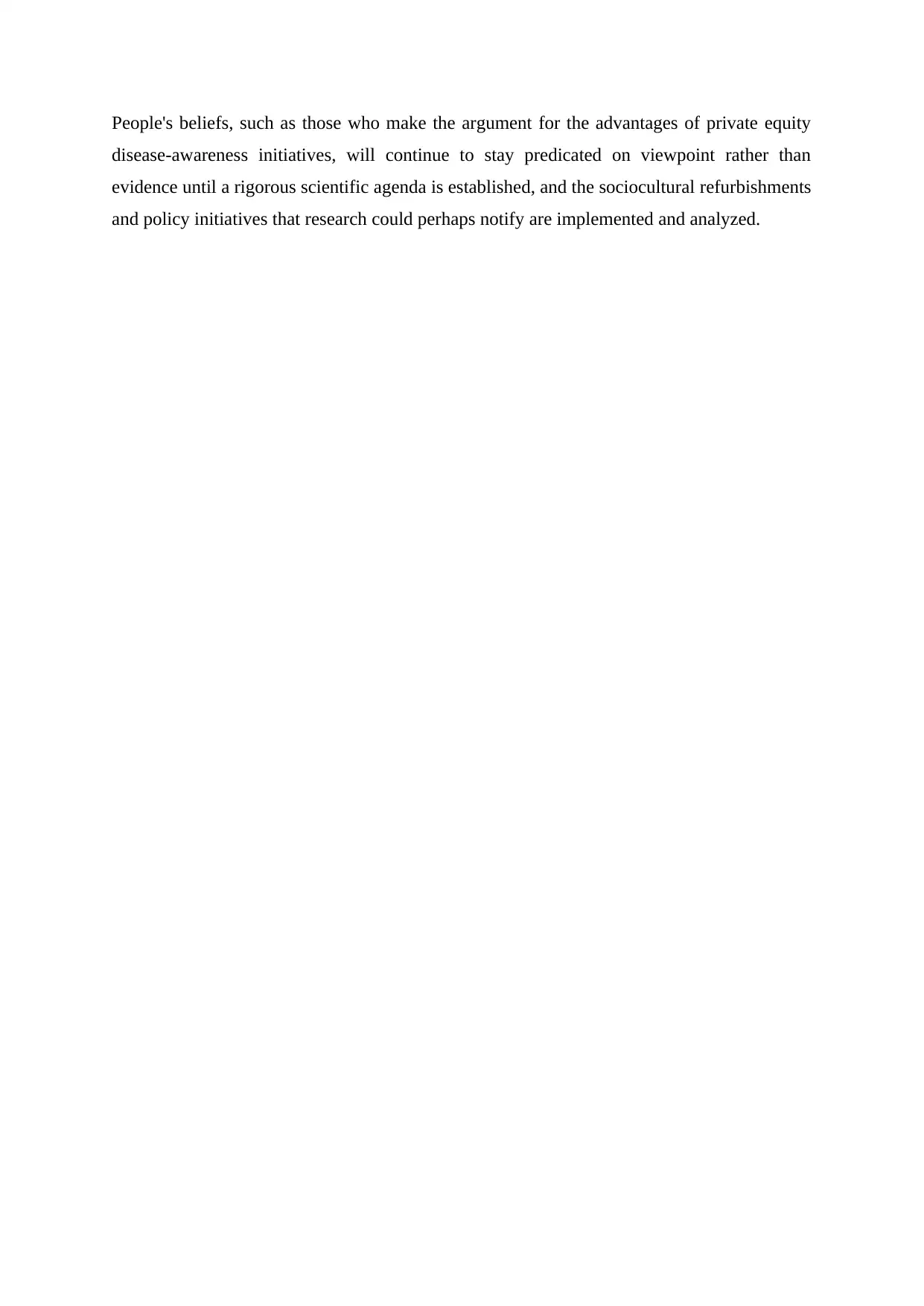
People's beliefs, such as those who make the argument for the advantages of private equity
disease-awareness initiatives, will continue to stay predicated on viewpoint rather than
evidence until a rigorous scientific agenda is established, and the sociocultural refurbishments
and policy initiatives that research could perhaps notify are implemented and analyzed.
disease-awareness initiatives, will continue to stay predicated on viewpoint rather than
evidence until a rigorous scientific agenda is established, and the sociocultural refurbishments
and policy initiatives that research could perhaps notify are implemented and analyzed.
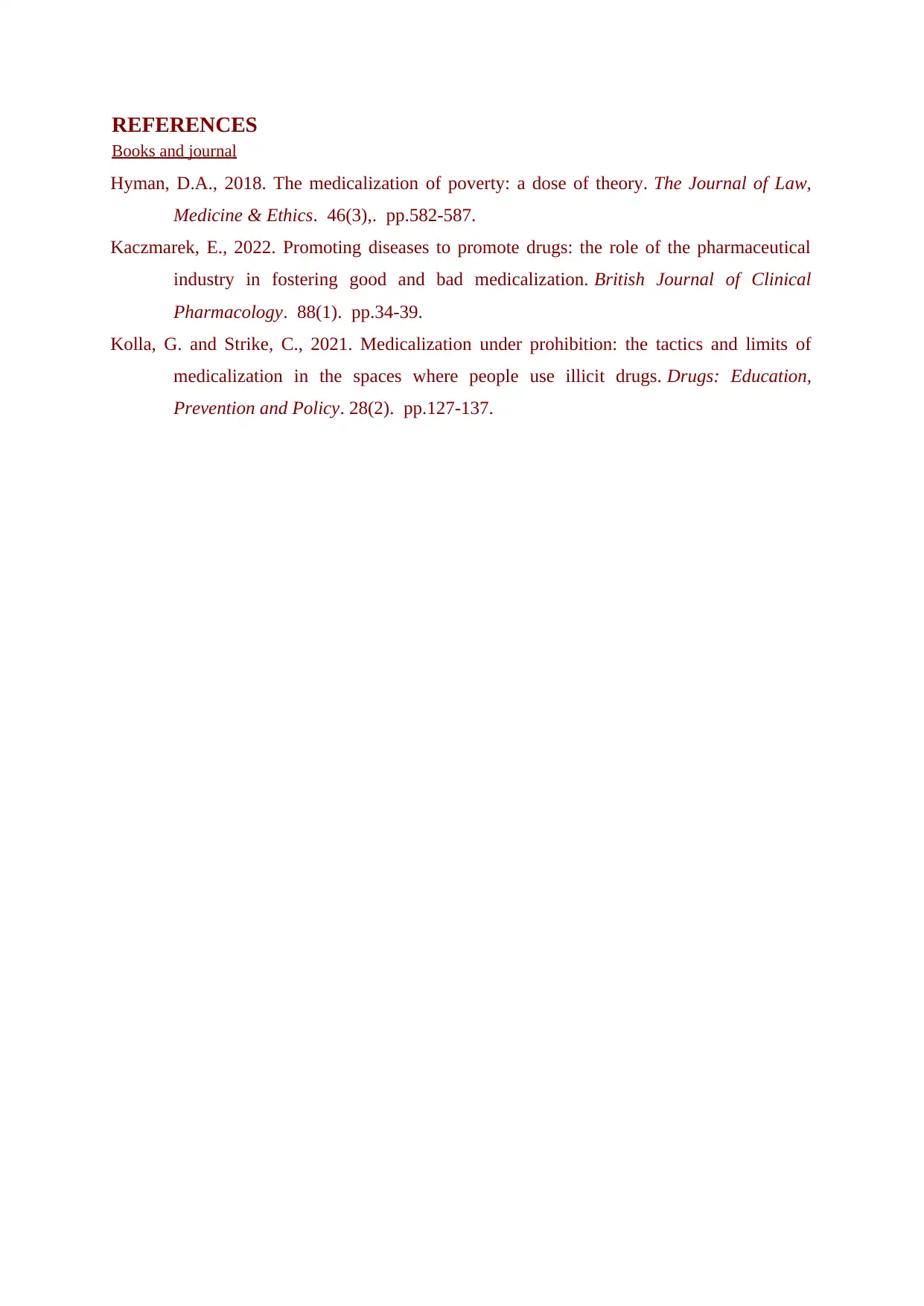
REFERENCES
Books and journal
Hyman, D.A., 2018. The medicalization of poverty: a dose of theory. The Journal of Law,
Medicine & Ethics. 46(3),. pp.582-587.
Kaczmarek, E., 2022. Promoting diseases to promote drugs: the role of the pharmaceutical
industry in fostering good and bad medicalization. British Journal of Clinical
Pharmacology. 88(1). pp.34-39.
Kolla, G. and Strike, C., 2021. Medicalization under prohibition: the tactics and limits of
medicalization in the spaces where people use illicit drugs. Drugs: Education,
Prevention and Policy. 28(2). pp.127-137.
Books and journal
Hyman, D.A., 2018. The medicalization of poverty: a dose of theory. The Journal of Law,
Medicine & Ethics. 46(3),. pp.582-587.
Kaczmarek, E., 2022. Promoting diseases to promote drugs: the role of the pharmaceutical
industry in fostering good and bad medicalization. British Journal of Clinical
Pharmacology. 88(1). pp.34-39.
Kolla, G. and Strike, C., 2021. Medicalization under prohibition: the tactics and limits of
medicalization in the spaces where people use illicit drugs. Drugs: Education,
Prevention and Policy. 28(2). pp.127-137.
1 out of 9
Related Documents
Your All-in-One AI-Powered Toolkit for Academic Success.
+13062052269
info@desklib.com
Available 24*7 on WhatsApp / Email
![[object Object]](/_next/static/media/star-bottom.7253800d.svg)
Unlock your academic potential
© 2024 | Zucol Services PVT LTD | All rights reserved.





